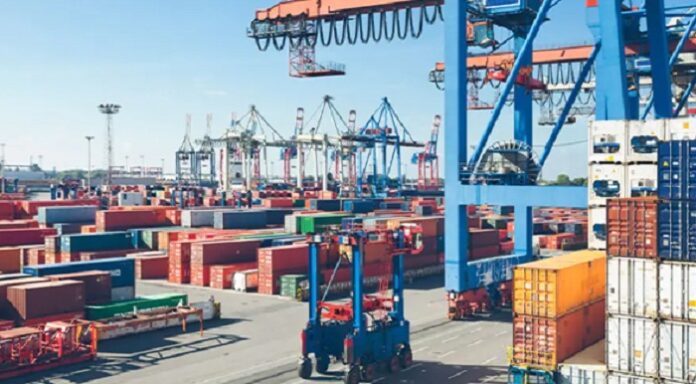
-
Container cargo traffic growth at China’s ports were stable in January-November 2022, despite slowing down last month due the continuous COVID outbreak in most Chinese provinces
-
270 million TEUs of containers were handled at the ports, up 4.2% y-o-y during the period
-
Non-containerized cargo traffic during the period rose 0.7% y-o-y to 14.31 billion metric tons
China container traffic growth remained stable in the first 11 months of 2022 despite a slowing in November due the continuous outbreak of the epidemic in most Chinese provinces, the Ministry of Transport reported on December 28.
The Chinese government’s decision to lift more COVID-related restrictions in January that include scrapping the closed-loop work system for ship crews in the country’s ports, are expected to speed up cargo-handling, allowing faster volume growth in the following months.
RELATED READ: China scrapping pandemic port curbs in January
Some 270 million TEUs (twenty-foot equivalent units) of containers were handled at the ports, up 4.2% year-on-year, from January to November, the ministry said.
Non-containerized cargo throughput edged up 0.7% y-o-y over the same period to 14.31 billion metric tons, according to the ministry.
In November, container throughput was 25.67 million TEUs, a 6.2% y-o-y increase.
Cargo throughput for domestic trade went up 2.2% y-o-y in January-November, while that for foreign trade fell 2.5%.
In July this year, the Chinese Academy of Sciences released a report that predicted nine of China’s seaports led by Shanghai Port will be among the world’s top 20 container ports in 2022 despite a two-month disruption of activity in Shanghai due to COVID-related lockdowns in the city and a number of other cities.
The widespread contagion kept passenger volumes low in November due to movement restrictions and also slowed the growth of port cargo throughput.
Cargo throughput in China’s ports last month was 1.38 billion tons, up 1% y-o-y, of which domestic trade increased 3.4% and foreign trade throughput gained 2.4%.
From January to November, commercial freight volumes totaled 46.25 billion tons, a 2.8% y-o-y fall, reflecting the impact of restrictions during the outbreaks.
The 11-month figure included completed road freight volume of 33.92 billion tons, down 5.3% y-o-y, and completed waterway freight volume of 7.8 billion tons, a year-on-year increase of 4.3%.
Commercial freight volume last month was 4.3 billion tons, down 8.0% y-o-y. This included completed road freight volume was 3.12 billion tons, a 10.5% y-o-y decline; while completed waterway freight volume eased 0.6% y-o-y to 760 million tons.
Operating passenger volume last month fell 38.1% y-o-y to 330 million. Of this number, 240 million passengers were transported by road, a decrease of 33.9% y-o-y; passengers transported by water totalled 7.04 million, decreasing 27.4% y-o-y.
For the first 11 months, commercial passenger traffic volume fell 32.4% y-o-y to 5.23 billion. Of this number, 3.31 billion were transported by road, a 29.8% y-o-y drop, while passengers transported by water totalled 110 million, down 28.6% y-o-y.




